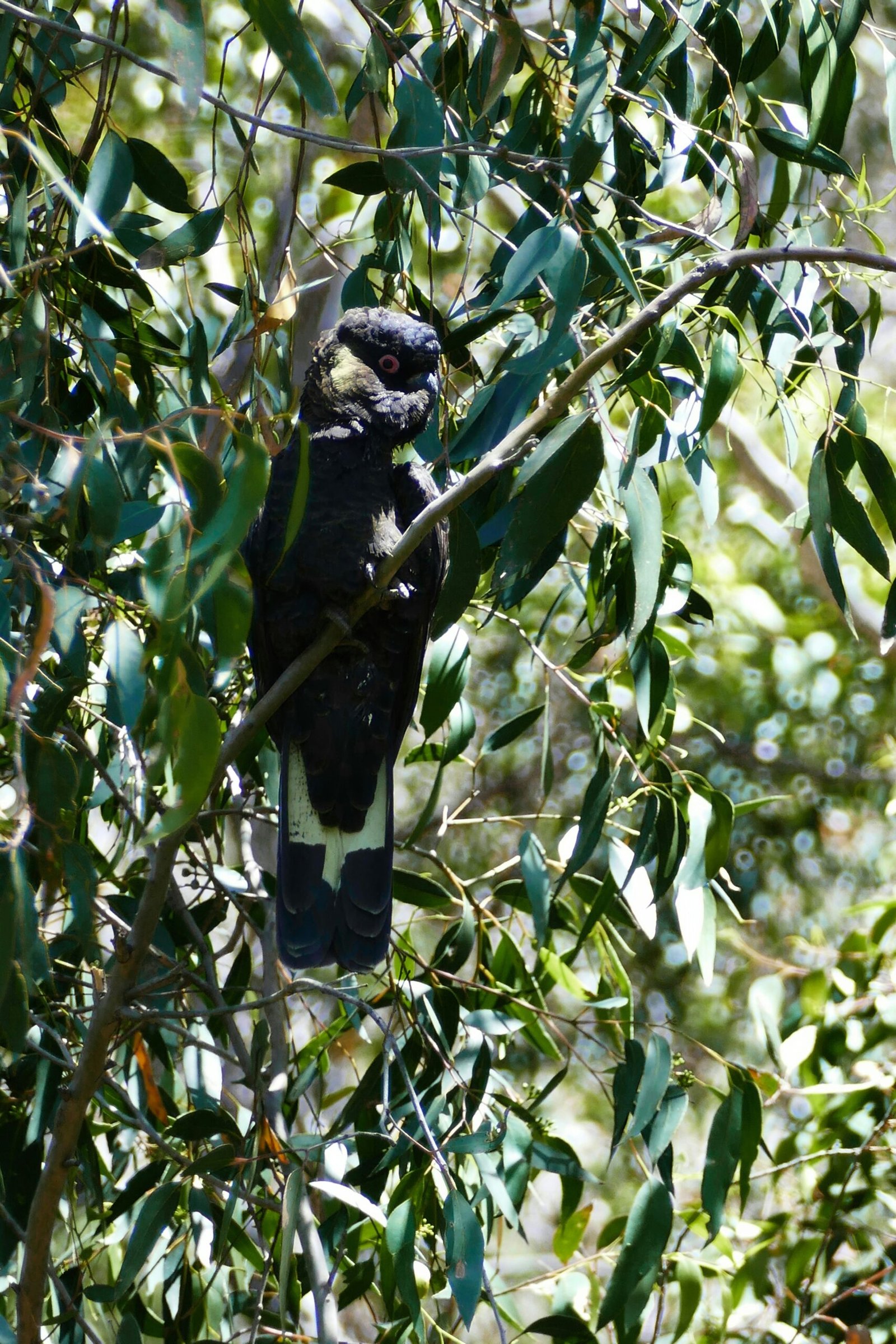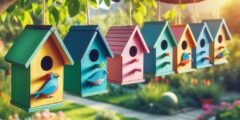Bluebird houses play a crucial role in bird conservation efforts, offering a safe and nurturing environment for these vibrant avian species to nest and thrive. As natural habitats decline due to urbanization and agricultural development, providing artificial nesting sites has become an essential measure in supporting the bluebird population. These specially designed birdhouses are not only vital for the well-being of bluebirds but also contribute to biodiversity and ecosystem health.
A key consideration in the design of a bluebird house is whether it should include a drainage hole in the floor. This question is central to ensuring the proper maintenance and functionality of the birdhouse. Proper drainage is significant for several reasons, primarily to prevent water accumulation that can lead to mold growth and wood decay, potentially harming the birds and shortening the lifespan of the birdhouse. Furthermore, standing water inside the birdhouse can create an unhealthy environment, impacting the health and safety of the bluebird chicks.
This blog post will delve into the various aspects of bluebird house design, focusing on the importance of drainage holes. We will explore expert opinions, scientific research, and practical considerations to provide a comprehensive understanding of this topic. By examining the benefits and potential drawbacks, readers will gain valuable insights into how to effectively create and maintain a bluebird house that supports the conservation of these beautiful birds.
Why is a Drainage Hole Important in a Bluebird House?
A drainage hole in a bluebird house serves several critical functions that contribute to the well-being of the birds and the overall durability of the nesting structure. First and foremost, it facilitates the removal of accumulated water resulting from rain, condensation, or other environmental factors. Without proper drainage, water can pool inside the bluebird house, creating a damp and unhealthy environment for its occupants.
Water accumulation can lead to several adverse effects. For instance, excessive moisture can compromise the structural integrity of the nesting materials, such as straw, feathers, and grass, making them prone to mold and decay. Mold poses a substantial health risk to the birds, potentially causing respiratory issues or other illnesses that can affect their survival and reproductive success.
Moreover, standing water can create a breeding ground for harmful microorganisms and parasites, further endangering the birds. Larvae of insects like mosquitoes thrive in stagnant water, and these parasites can carry diseases that are detrimental to the bluebirds’ health. By ensuring proper drainage, these risks are significantly mitigated, creating a safer and more hospitable environment for the bluebirds to thrive.
Additionally, a well-drained bluebird house helps maintain optimal temperature and humidity levels within the nest. Excess moisture can lead to fluctuations in these parameters, causing stress to the birds, especially the chicks, which are more vulnerable to environmental stressors. A balanced microclimate within the bluebird house is essential for the development and well-being of the nestlings.
Therefore, incorporating a drainage hole in the floor of a bluebird house is not merely a design preference but a necessary feature to ensure the health and safety of its avian inhabitants. This simple yet effective measure can greatly enhance the overall nesting experience for bluebirds, promoting successful breeding and the continued vitality of these charming birds.
How Many Drainage Holes Should a Bluebird House Have?
Effective water management is crucial for maintaining a habitable environment within a bluebird house. Experts recommend incorporating four to five small drainage holes in the floor of the birdhouse. This standard recommendation is based on extensive observations and research into avian nesting habits and housing requirements. The primary purpose of these drainage holes is to prevent water accumulation, which can be detrimental to the health and safety of bluebird occupants.
The determination of the optimal number of drainage holes involves a careful balance. While sufficient drainage is necessary to keep the interior dry, an excess number of holes can compromise the structural integrity of the birdhouse. Typically, four to five holes, each about 1/4 inch in diameter, are adequate to allow water to escape without weakening the floor of the birdhouse. This configuration ensures that rainwater or condensation is efficiently expelled, thus preventing mold growth and maintaining a dry nesting environment.
Furthermore, placing these drainage holes strategically around the periphery of the floor helps to ensure that water is removed from all areas, not just the center. This strategic placement also minimizes the risk of creating weak points in the structure. By following these guidelines, birdhouse builders can achieve an effective drainage system that supports the well-being of bluebirds while preserving the integrity and durability of the house.
What Size Should the Drainage Holes Be in a Bluebird House?
When constructing or purchasing a bluebird house, one critical aspect to consider is the size of the drainage holes. Generally, these holes should be between ³/8 to ½ inches in diameter. This specific range is effective in allowing water to escape efficiently, which helps to maintain a dry and safe environment for the bluebirds. Holes within this size range are large enough to prevent water from pooling at the bottom of the house, yet small enough to keep out most debris that could potentially clog the drainage system.
Depending on the design and materials used in the construction of the bluebird house, there might be slight variations in the recommended size of the drainage holes. For example, houses made from thicker wooden materials might benefit from slightly larger holes, around ½ inch, to ensure that water can drain effectively through the denser material. On the other hand, bluebird houses made from thinner woods or alternative materials like PVC might only require holes on the smaller end of the spectrum, around ³/8 inch, to perform efficiently.
It’s also important to consider the overall design of the bluebird house. Some designs incorporate sloped floors or elevated sections that naturally channel water towards the drainage holes. In such cases, ensuring the drainage holes are appropriately sized and correctly positioned becomes even more crucial. Additionally, the number of drainage holes and their distribution can impact the effectiveness of water drainage. Typically, bluebird houses should have at least two to four drainage holes, evenly spaced to allow consistent water escape from all areas of the floor.
By adhering to these size guidelines, bluebird house enthusiasts can create an optimal habitat for these charming birds, ensuring their nests remain dry and conducive to rearing young bluebirds. Proper drainage not only promotes the health and safety of the birds but also contributes to the longevity and sustainability of the bluebird house itself.
Can I Use Slots Instead of Holes for Drainage in a Bluebird House?
When constructing a bluebird house, drainage is a critical aspect to consider. While traditional round holes have been the standard for facilitating drainage, some birdhouse enthusiasts explore the alternative of using slots. Slots, typically elongated openings, can offer certain advantages over round holes. However, like any design modification, they come with their own set of pros and cons.
One significant advantage of using slots is the increased drainage efficiency. Slots can allow water to escape more rapidly, reducing the risk of water accumulation that could potentially harm the bluebirds or their nests. Additionally, slots can help in better air circulation, which is crucial for maintaining a dry and healthy environment inside the birdhouse.
Despite these benefits, there are certain drawbacks to consider. The construction of slots can be more complex compared to drilling round holes. Precise measurements and careful cutting are required to ensure that the slots are neither too wide, which could compromise the structural integrity of the floor, nor too narrow, which would limit their drainage effectiveness. This increased complexity could be a deterrent for those who prefer a straightforward building process.
Moreover, maintenance of bluebird houses with slots can be more challenging. Slots may collect debris more easily than round holes, necessitating more frequent cleaning to ensure unobstructed drainage. There is also a potential risk that slots, if not properly constructed, could provide entry points for predators or allow drafts, which could affect the comfort and safety of the bluebirds.
In comparison to traditional round holes, slots offer a viable alternative for drainage in a bluebird house. However, they require careful consideration of design and construction techniques to maximize their effectiveness. Birdhouse builders should weigh these factors carefully to determine the best approach for their specific needs and capabilities.
Are There Alternative Methods for Drainage Besides Holes in the Floor of a Bluebird House?
When constructing or maintaining a bluebird house, ensuring proper drainage is crucial to the health and safety of its avian occupants. While the traditional approach involves drilling holes in the floor, there are several alternative methods that can be equally effective.
One such method is the implementation of angled floors. By designing the floor of the bluebird house with a slight incline, water is encouraged to flow towards one end and exit through a designated gap. This method minimizes the risk of water pooling inside the house. Angled floors are relatively easy to implement for those with basic woodworking skills and can be a cost-effective solution, requiring just a few modifications to the existing design.
Another innovative approach is the use of mesh bottoms. By replacing or supplementing the solid floor with a mesh material, water can easily drain through, preventing any accumulation. Mesh bottoms offer excellent drainage and ventilation, which can enhance the overall environment within the house. However, they may require more frequent maintenance to ensure the mesh remains clean and free of debris. The cost can vary depending on the type of mesh used, but it generally remains affordable.
Specialized drainage systems are also available for those seeking a more sophisticated solution. These systems often include built-in channels or grooves that direct water away from the nesting area. While highly effective, specialized drainage systems may be more complex to install and come at a higher cost compared to simpler methods. They are ideal for those who prioritize durability and long-term maintenance.
When comparing these alternatives to the standard hole-based approach, each method offers unique advantages. Angled floors and mesh bottoms are easy to implement and maintain, providing affordable and efficient drainage solutions. Specialized drainage systems, although more costly, offer superior water management and longevity. Ultimately, the choice depends on the specific requirements and resources of the birdhouse builder.
What Happens If I Don’t Put a Drainage Hole in My Bluebird House?
Ensuring that a bluebird house has proper drainage is crucial for maintaining a healthy environment for its avian inhabitants. A bluebird house without drainage holes can lead to several adverse consequences, primarily due to water accumulation. When rainwater or melting snow enters the birdhouse and has no way of escaping, it can create a moist environment that is detrimental to the well-being of bluebirds.
The buildup of water in a bluebird house can result in the growth of mold and mildew. These fungi thrive in damp conditions and can pose serious health risks to bluebirds, affecting their respiratory systems and overall health. In addition to health issues, mold can degrade the integrity of the nesting materials, making the nest less suitable for egg incubation and chick rearing.
Furthermore, the presence of excessive moisture can lead to the rapid decomposition of nesting materials. As these materials break down, they may release unpleasant odors and create an unhygienic living space. The deteriorated nesting materials may also lose their insulating properties, exposing eggs and chicks to temperature fluctuations that can be harmful to their development.
Real-life examples underscore the importance of proper drainage in bluebird houses. In cases where birdhouses lacked drainage holes, observers have noted a higher incidence of abandoned nests, indicating that bluebirds may leave an unsuitable nesting site in search of a drier, safer location. Additionally, nests that remained in undrained houses often showed signs of mold and nesting material degradation, leading to unsuccessful breeding attempts.
In conclusion, the absence of drainage holes in a bluebird house can create a hostile environment for bluebirds, leading to health issues, nesting material degradation, and abandoned nests. By ensuring proper drainage, bird enthusiasts can provide a safer and more comfortable habitat for these beautiful creatures.
How Can I Prevent Rainwater from Entering the Entrance Hole of a Bluebird House with Drainage?
Ensuring that rainwater does not enter the entrance hole of a bluebird house, even when proper drainage is in place, requires a multi-faceted approach. One of the primary considerations is the design of the roof. A sloped or pitched roof can significantly reduce the amount of rainwater that reaches the entrance hole. The angle of the roof should direct water away from the entrance, thereby preventing it from dripping into the interior of the birdhouse.
The inclusion of overhangs is another effective strategy. An overhang extending a few inches beyond the entrance hole can provide an additional barrier against direct rain exposure. This simple design element acts as a shield, diverting rainwater away from the entrance and minimizing the risk of water ingress.
Placement of the bluebird house is equally critical. Positioning the house under a tree or another form of natural cover can offer protection against rain. Additionally, orienting the entrance hole away from the prevailing wind direction can further reduce the chances of rainwater being blown into the house. These placement strategies not only enhance the protection against rain but also create a more favorable environment for the bluebirds.
Periodic checks and maintenance are essential to ensure that the birdhouse remains effective. Regularly inspect the roof, overhangs, and drainage holes for any signs of wear or blockage. Clearing debris and ensuring that the drainage holes are unobstructed will help maintain the birdhouse’s functionality. Moreover, checking for any potential leaks around the entrance hole can prevent water from seeping in, thereby safeguarding the nest inside.
By combining thoughtful design, strategic placement, and regular maintenance, you can effectively minimize rainwater ingress through the entrance hole of a bluebird house, ensuring a safe and dry habitat for its occupants.
Should I Plug the Drainage Holes in a Bluebird House During the Winter?
When considering whether to plug the drainage holes in a bluebird house during the winter, it is essential to weigh the potential benefits and risks involved. The primary advantage of plugging these holes is to reduce drafts, thereby providing a warmer and more insulated environment for the birds. Birds, like bluebirds, are particularly vulnerable to cold temperatures, and minimizing drafts can contribute to their overall comfort and survival during harsh winter months.
However, sealing drainage holes also presents significant risks. One of the primary concerns is water buildup caused by melting snow or winter rains. If the drainage holes are plugged, any accumulated moisture inside the bluebird house could lead to dampness and mold, posing health risks to the birds. Additionally, excessive moisture can compromise the structural integrity of the birdhouse, leading to potential damage over time.
To strike a balance, it is advisable to employ seasonal adjustments that maintain a safe and dry environment for the birds. Instead of completely sealing the drainage holes, consider using temporary covers that can be easily removed or adjusted. Materials such as breathable fabric or mesh can provide some insulation while still allowing moisture to escape. These temporary solutions can help mitigate drafts without entirely obstructing drainage.
Furthermore, regular maintenance and monitoring of the bluebird house during the winter can ensure it remains in optimal condition. Checking for signs of water buildup, and ensuring that snow and ice are cleared from the entrance and roof, can help maintain a dry and comfortable environment for the birds. By taking these proactive steps, bird enthusiasts can support the well-being of bluebirds during the winter months while preserving the integrity of their habitats.
How Do I Clean Out the Debris from the Drainage Holes in a Bluebird House?
Ensuring that the drainage holes in a bluebird house remain clear is vital for maintaining a healthy and safe environment for the birds. Over time, debris such as leaves, twigs, and dirt can accumulate and obstruct these holes, compromising the house’s ability to drain properly. Regular cleaning and maintenance are necessary to keep the bluebird house in optimal condition.
To clean out the debris from the drainage holes, you will need the following tools and materials:
- Small brush or toothbrush
- Pipe cleaners or thin wire
- Bucket of warm, soapy water
- Soft cloth or sponge
- Protective gloves
Follow these steps to effectively clean the drainage holes:
- Remove the Bluebird House: Carefully take down the bluebird house from its mounting to allow for easier access to the drainage holes.
- Inspect the Drainage Holes: Examine the drainage holes for any visible blockages. Identify areas where debris has accumulated.
- Clear the Debris: Use a small brush or toothbrush to dislodge any dirt and debris around the drainage holes. For tougher blockages, utilize a pipe cleaner or thin wire to push out the debris.
- Clean the Interior: Once the drainage holes are cleared, clean the interior of the bluebird house using a soft cloth or sponge dipped in warm, soapy water. This will help remove any remaining dirt and provide a fresh environment for the birds.
- Rinse and Dry: Thoroughly rinse the bluebird house with clean water and dry it completely before reattaching it to its mounting.
- Regular maintenance is crucial for the proper functioning of the bluebird house. It is recommended to clean the drainage holes at least twice a year, preferably at the end of the nesting season and before the start of a new season. Keeping the drainage holes clear not only prevents water accumulation but also ensures that the bluebird house remains a safe and inviting habitat for your feathered visitors.
FAQs
Q: Why is a drainage hole necessary in a bluebird house?
A: A drainage hole is essential in a bluebird house to prevent water accumulation, which can lead to mold, mildew, and unsanitary conditions. Proper drainage ensures a dry and safe environment for the birds and their young.
Q: How many drainage holes should a bluebird house have?
A: Ideally, a bluebird house should have at least one drainage hole, but multiple small holes can be more effective. This allows water to escape more efficiently and minimizes the risk of clogging.
Q: What size should the drainage holes be?
A: The drainage holes should typically be 1/4 to 1/2 inch in diameter. This size is sufficient to allow water to drain while preventing predators from entering the house through the holes.
Q: Can I install a bluebird house without a drainage hole?
A: While it is possible to install a bluebird house without a drainage hole, it is not recommended. Lack of drainage can lead to standing water, which can harm the birds and their nestlings.
Q: What material is best for the floor of a bluebird house to ensure proper drainage?
A: Wood is generally the best material for the floor of a bluebird house, as it is natural and breathable. However, it is important to treat the wood to prevent rot and ensure longevity. Metal or plastic floors can also be used, but they should have adequate holes for drainage.
Q: How often should I check the drainage holes in a bluebird house?
A: It is advisable to check the drainage holes at least once a season to ensure they are not clogged with debris. Regular maintenance helps maintain a healthy environment for the bluebirds.
Q: Can adding too many drainage holes weaken the structure of the bluebird house?
A: Adding too many drainage holes can indeed compromise the structural integrity of the bluebird house. It is important to balance the need for adequate drainage with maintaining a sturdy and safe habitat.
Conclusion
Proper drainage in bluebird houses is essential to safeguarding the health and safety of these charming birds. Throughout this blog post, we have underscored the necessity of incorporating drainage holes in the floor of bluebird houses. These holes serve to prevent water accumulation, which can lead to mold growth and harm to the bluebirds, particularly their young. Furthermore, ensuring adequate ventilation and using appropriate materials for construction were highlighted as critical aspects of maintaining a conducive environment for bluebirds.
To summarize, the inclusion of drainage holes is a simple yet vital step in the design of bluebird houses. By implementing this practice, along with our other recommendations, you can significantly enhance the living conditions for bluebirds, promoting their well-being and encouraging their presence in your area.
We encourage you to take these guidelines to heart and apply them to your bluebird house projects. Your efforts can make a substantial difference in the conservation of bluebird populations. We invite you to share your experiences, ask further questions, and engage with other bird enthusiasts in the comments section below. Together, we can create a thriving environment for bluebirds to flourish.









